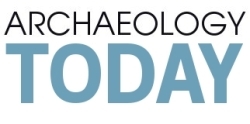
September 29th, 2013
New Finds Uncovered at Ancient Greek Site of Argilos
With a team of 50 students and additional help from workmen, archaeologists have uncovered the remains of structures at the site of ancient Argilos on the coast of Macedonia, reporting that the finds will help open an additional window on the development and economy of one of the earliest Greek colonies in an area that was previously settled by the Thracians. Among the discoveries was a large portico consisting of at least seven storerooms. (Popular Archaeology)
2500-Year-Old Horse Remains in Bulgaria Suggest Creatures Were Buried Upright
Archaeologists have uncovered the remains of a Thracian carriage and two horses that appear to have been buried upright. The chariot and horse skeletons are 2,500-years-old and were discovered in the village of Svestari in north-east Bulgaria. The two-wheeled carriage and carcasses of the horses were found in a Thracian tomb along with some decorations. (www.novinite.com)
Mystery of the massive fire which ravaged St Louis – America’s most prosperous ancient city
A mysterious fire which destroyed North America’s greatest ancient civilization has led to fascinating discoveries about social tensions, violent tendencies and religious practices within the society. The city of Cahokia, whose secrets lie underneath where St Louis, Missouri now stands, was ruined by a huge blaze around the year 1170 CE. Following the disaster, the Native American city changed dramatically – defense walls were built, buildings fortified and a sun symbol incorporated into designs. (www.dailymail.co.uk)
Archaeologists search for West Texas village
As Indiana Jones once said, “X never, ever marks the spot.” That is what is making things difficult for an archaeology team as it examines the original Socorro Mission site for the remains of a Native American village, a lost cemetery or anything else that “belongs in a museum.” The Texas Historical Commission sent the team this week to Socorro to see if the old Socorro Mission site can be expanded, and protected, by any discovery the team can make. (Beaumontenterprise.com)
Discovery of sacred Roman well amazes archaeology team
It’s the most significant archaeological discovery in the Portsmouth area for many years. Buried a few feet under a garden in the centre of Havant, archaeologists stumbled upon a Roman well filled with coins and a bronze ring with a carving of Neptune, the Roman god of the sea. Perhaps most intriguing was the discovery of eight dog skeletons at the bottom of the well. (FreeRepublic.com)
Ancient Egypt: Misconceptions About the Pyramids
The pyramids are the most distinctive and best-known feature of ancient Egypt. The pyramids are the symbols of ancient Egyptian civilization and reflect the great power of the Egyptian kings, known today as pharaohs. Today there are at least 118 known pyramids, all of which were constructed during the Old Kingdom (2575 BCE to 2150 BCE). (Daily Kos)





